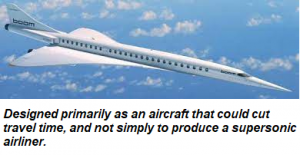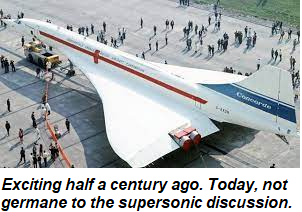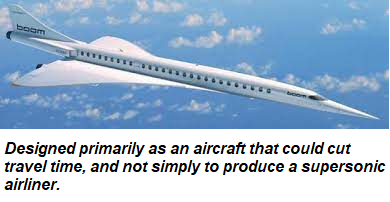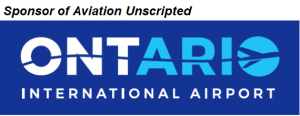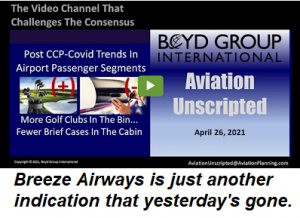Observing the U.S. Independence
Holiday Week-end…
Monday Insight To Return 12 July.
In The Meantime… 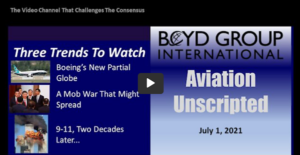
Check out the latest Aviation Unscripted video… we cover three emerging areas industry planners need to consider – now.
- Boeing is facing a closed China market – and the folks in Washington are doing nothing…
- The criminals in China who brought us the CCP-Covid pandemic may be at it again…
- We’re just starting the 20th anniversary of 9/11… and no, we are not safer. And yes, terrorist attacks are still being perpetrated. Just without any explosives – yet.
The Monday Insight will be back next week. To view the Unscripted video – click here.
____________
June 28, 2021 Insight
Okay, Time For Some Hard Answers
9-11 Uncovering The Truth… 20 Years Later
Entering into the 20th year since the 9-11 attack, it is a lead pipe cinch that we’re in for some really veneer journalism, marking the event.
If They Tell The Real Facts, They Won’t Get Access To The Homeland Security Honchos. By and large, a number of the usual suspects in the media (and certainly not all) have not only completely bought into the lore that the USA has taken bold action against aviation terrorism, but some are rabid advocates and defenders of the TSA/DHS mess that’s evolved over the last two decades.
They are not journalists. They’re toady apologists.
A couple years ago, we got a call from one of the prime network “correspondents” who are often mannequined in front of the camera, trying to pose as intelligent life forms. He asked for comments regarding the “progress” made by the TSA.
When advised that virtually nothing proactively had been done to set up anticipative security, this clown came unglued – angrily denouncing any such statements, because – get this – he had personally spoken to the Secretary of Homeland Security, and, therefore, had all the facts. Therefore, any information to the contrary had been “debunked.” We’re talking loud-voice defensiveness – from one of that network’s supposedly top reporters.
The guy is direct competition for what’s hanging on the rack at Men’s Wearhouse.
Get Ready For Some Great Fictional Performances. Unfortunately, we can still expect a rash of oh-so-sincere interviews with current and former vapor-suits at the TSA or Homeland Security. There’s been a parade of them over the last 20 years, almost all incompetent political appointees.
Naturally, watch for the B-roll walk-and-talk chit-chat between the “award-winning” stars of TV news magazines and a motley collection of ex-TSA/DHS notables – mostly telling us to the eager nods of the interviewer that because of their innovative and aggressive planning, there have been no major terrorist attacks (which is a lie), and the system has made us safe (which is another lie.)
Truth and honest journalism need not apply. A few of these guys in the fourth estate would make Pravda in its Soviet heyday very proud.
An Important Source of 9-11 Truth. One imperative for anyone in aviation who seeks the truth about 9-11, not the saccharine goo put out by DHS and gobbled up by much of the media, is to get a copy of Fortress of Deceit – The Story of a 9-11 Whistleblower. It’s the story of Bogdan Dzakovic – one of the FAA Special Agents who was at the forefront of attempting to get through the political corruption that led to the tragedy. We’ll be discussing his role below. The Amazon link is at the end of this Insight.
Got The Answers? In last week’s Monday Insight, we posed questions regarding some of the circumstances surrounding the 9-11 attack and the Keystone Kops official responses. Here are the answers.
Question One: When were the first warnings by security experts of the potential of not only the imminent potential for hijackings, but multiple hijackings, due to sloppy aviation security?
Answer: In the first week of May, 2001, the Fox affiliate accomplished an investigative report on the sloppy and dangerous aviation security at Boston Logan. The results were, frankly, shocking, and it can still be viewed via YouTube.
 The day after the report, retired FAA Special Agent Brian Sullivan wrote to Senator John Kerry’s office, specifically warning of Logan’s security shortcomings, and noting that the threat of multiple hijackings was very real…
The day after the report, retired FAA Special Agent Brian Sullivan wrote to Senator John Kerry’s office, specifically warning of Logan’s security shortcomings, and noting that the threat of multiple hijackings was very real…
“Think what the result would be of a coordinated attack which took down several domestic flights on the same day. The problem is, with our current screening system, this is more than possible. Given time, considering current threats, It is almost likely. We don’t have to wait for a tragedy to occur to act.”
This was four months before the terrorists did just that. Kerry’s office did nothing. Later, Mr. Sullivan called FAA Administrator Jan Garvey’s Hotline with the details. Zero substantive response.
A copy of the Fox tape was given directly to FAA Administrator Jane Garvey’s office. She cannot deny that at least her people had knowledge of what it represented. Yet, it was blissfully ignored.
Question Two: When was the first time one of the hijackers was reportedly seen taking pictures of security at Boston Logan Airport?
Answer: It is believed that Mohammad Atta was seen taking pictures of security checkpoints on May 11, coincidentally just days after the Fox report. In any case, the hijackers apparently planned carefully months in advance, including taking test flights. They had no real intelligent or professional competition from the folks at the top of the FAA.
Mr. Sullivan speaks the truth: it can be argued that Al Qaeda was paying more attention to Logan’s airport security vulnerabilities than the FAA and the Airport itself.
Question Three: After being briefed on the major failures at U.S. airports prior to 9-11 by security experts, what actions did Senator John McCain’s office immediately take?
Answer: Worse than nothing. They sneered at the facts.
Frustrated by the total lack of interest on the part of the FAA hierarchy, contact was made by current and past FAA Special Agents directly with key congress members, who, as it turned out could not have cared less.
Mr. Steve Elson, a recently retired Special FAA Agent and Red Team member, and Mr. Bogdan Dzakovic, a current FAA Red Team member at the time, extensively outlined the security shortfalls to a staffer in McCain’s office, who appeared to take copious notes.
When they were done, she looked up and responded, “Interesting, but what do you expect us to do about it.?” She was probably writing up her grocery list. Point: McCain’s office did not care.
These gentlemen also approached Senator John Kerry’s office, and were ultimately blown off with the excuse, “You’re not constituents!” At least this demonstrated that Republicans and Democrats can agree on some things. Kerry, like McCain, simply did not care, either.
The fact was that for these political luminaries to take any action would mean pointing fingers at other colleagues inside the Marble Playpen, a.k.a. congress and administrations on both sides of the aisle. That’s not in the rulebook, at least not in that fraternity.
Question Four: In the aftermath of the worst national security failure since Pearl Harbor, name the three senior federal security officials who were reprimanded for professional malfeasance.
Answer: You can’t.
That’s because no federal staff in charge of the weak security before 9-11 were given any negative scrutiny at all. Much to the contrary.
The dust had barely settled on the Twin Towers before President George W. Bush was quoted as thanking DOT Secretary Norman Mineta and his staff for their fine work. (The DOT’s FAA was responsible for the aviation security that allowed 9-11 to take place.)
Plus, when the TSA was created, many of the security people at the FAA got promotions into it. This simply contaminated the new bureaucracy with the incompetent intellectual FAA sludge that allowed 9-11 to happen. As far as aviation security goes, the TSA is the FAA’s demon spawn.
Question Five: In the immediate aftermath of the attack, what was done with the FAA security team which accurately identified and warned about systemic security weaknesses with the approach used at Boston and other airports?
Answer: In a normal, rational and honest world, this Red Team approach would have been expanded immediately.
Nope, the program was immediately disbanded. While Steve Elson and Brian Sullivan were already retired and were beyond the revengeful reach of the embarrassed hacks at the FAA and the Bush Administration, Mr. Dzakovic, however, was still an employee, and was subsequently and suitably career-harassed for the troublesome whistle-blower he was.
In the aftermath of the 9-11 attacks, the Bush administration stood by like nebbish deer in the headlights. They made no efforts to reward, protect or even recognize these heroes. But Bush did reward with promotions many of the FAA incompetents that were responsible for not addressing bad security. Says volumes.
Question Six: Where did the top official responsible for aviation security at the time of the 9-11 attack ultimately end up, career-wise?
Of the four airliners hijacked, two were United Airlines flights, with loss of all lives, as well as those killed by the plane that was flown into the World Trade Center.
The political appointee Administrator in charge of the FAA – and hence, responsible for the incompetent security in place that allowed 9-11 – later took a number of marquee jobs, and then landed the big one. Chairman of the Board at, yes, United Airlines. One senior official (now gone) at the airline lauded her as the type of management the airline needed. You can’t make this type of melodrama up.
Funny, unions at United vowed “they’d never forget” the tragedy of 9-11. Guess they got distracted. Never heard a peep.
Question Seven: Have there been other successful terrorist attacks on the USA since 9-11?
Answer: Yes.
Terrorist attacks are events that threaten or destroy our way of life. Security is more than stopping bombs on airplanes. Take a gander at what’s happening in cyber space.
In 2021, a successful terrorist computer hacking attack was made on Colonial Pipeline, which materially shutdown the flow fuel to the East Coast.
The Department of Homeland Security, apparently, has no concern or contingency planning beyond trying to stop pointy objects getting on airplanes. The rest of the USA and its infrastructure is wide open. Our electrical grids. Our pipelines. Our road system comprised of rickety interstate highway bridges.
You can take it to ‘Vegas and make book on it: the Department of Homeland security doesn’t have so much as crib sheet in regard to anticipating these types of vulnerabilities, let alone have any contingency or event-remediation planning.
Even at the top of the Washington slag heap, there is no concern. After the Colonial Pipeline attack, a smarmy Biden administration hack, when asked about the event actually snickered and recommended consumers buy electric cars.
Watch for more terrorist hacking events. There have been others. They hit at the core of our societal foundation.
Question Eight: The FAA security inspectors who warned about sloppy pre-9-11 security testified to and were interviewed by the 9-11 Commission. Into which section of the final report were their observations included?
Answer: Don’t bother to look. The testimony of these experts, which illuminated the core of the pre-9-11 malfeasance by the leadership of the FAA, not to mention the almost criminal behavior on the part of other senior officials and politicians, was reduced to just one very short footnote on page 451 of this magnum opus of political slime.
The entire 9-11 Commission itself was an exercise in political corruption, intentionally making sure nobody was held responsible. In that, it was a huge success.
A Warning: We Are Still Vulnerable. Here’s a warning from Brian Sullivan, the retired FAA Special Agent who was involved in trying to get the clowns in the FAA and congress to understand the threat before the tragedy on that Tuesday morning.
“Twenty years ago this June we had a chance to prevent the 9/11 hijackings, but no one was listening. Are they listening now?”
That is, unfortunately, an open question.
More To Come. Over the next few months, we intend to do a number of Aviation Unscripted videos, interviewing some of these people who attempted to get the Bush administration and the Washington hackocracy to take action.
The 9-11 Failures Have NOT Been Addressed. Much to the contrary, and we still have players out there that are targeting the USA. We urge you to order or download Fortress of Deceit. It will put in context the truth about 9-11. Yup, cockpit doors are strengthened and we can’t bring more than 3 Oz of Grecian Formula in our luggage, anymore. That isn’t anticipative security, and the same failures that were in place 20 years ago continue. A click here will bring you to the order page for Fortress of Deceit on Amazon. Hit it.
In the meantime, we suggest being very cautious in believing what some in the media will be spouting on this 20th anniversary. There will be some honest stories, but it’s likely many will be suck-up journalism. And run for cover when any of them spout that these allegations have been “debunked.”
All that word means is that it’s not politically acceptable to question the all-knowing media.
___________________

 territory in the next 12 months. Click here.
territory in the next 12 months. Click here.





